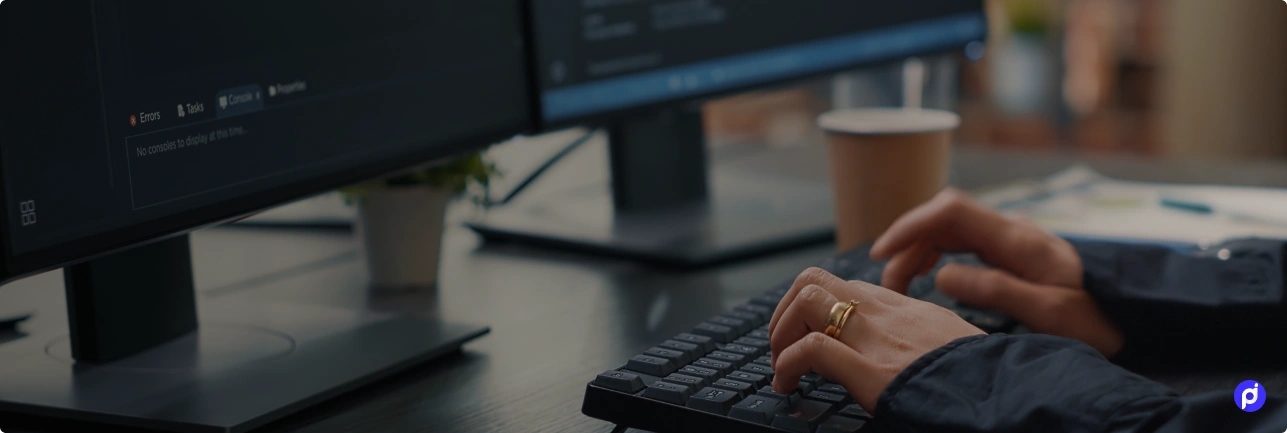Rapid Prototyping: Developing GUI Applications with Python and Tkinter
Posted By - Pony

Posted On - April 9, 2024

Businesses today seek agile solutions that can swiftly adapt to changing market demands. Rapid prototyping has emerged as a key methodology, allowing developers to quickly create functional prototypes that demonstrate the core features of an application. When it comes to developing graphical user interface (GUI) applications, Python coupled with Tkinter offers a powerful combination for rapid prototyping. Let’s evaluate the combination.
The Need for Rapid Prototyping
In the dynamic landscape of technology, the ability to swiftly prototype and iterate upon software ideas is crucial. Rapid prototyping enables developers to gather valuable feedback early in the development cycle, leading to faster iterations and ultimately, better products. GUI applications require careful consideration of user interface design and functionality. Python, with its simplicity and versatility, paired with Tkinter, a standard GUI toolkit for Python, provides developers with the tools needed to rapidly prototype GUI applications.
Python and Tkinter: A Dynamic Duo for Rapid Prototyping
Python’s popularity among developers stems from its readability, ease of use, and vast ecosystem of libraries and frameworks. Tkinter, being included with most Python installations, offers a convenient solution for creating GUI applications without the need for additional installations or dependencies. Together, Python and Tkinter empower developers to quickly bring their ideas to life, iterating upon them based on user feedback and requirements.
Benefits of Python and Tkinter:
1. Streamlined Development Process
One of the primary advantages of using Python and Tkinter for rapid prototyping is the streamlined development process. Python’s syntax is clean and concise, allowing developers to write code quickly and focus on the logic of their applications rather than getting bogged down by complex syntax. Tkinter provides a set of pre-built widgets and tools for creating GUI elements, further expediting the development process. This combination enables developers to iterate rapidly, making changes and improvements to their prototypes with minimal effort.
2. Flexibility and Customization
Despite its simplicity, Python offers a high degree of flexibility and customization. Developers can leverage Python’s extensive library of modules to extend the functionality of their applications as needed. Tkinter, likewise, allows for the creation of custom widgets and layouts, enabling developers to tailor the user interface to suit the specific requirements of their project. This flexibility is invaluable during the prototyping phase, as it allows developers to experiment with different design concepts and features quickly.
3. Cross-Platform Compatibility
In today’s multi-platform world, cross-platform compatibility is essential for reaching a broad audience. Python’s cross-platform nature, combined with Tkinter’s ability to create native-looking interfaces, ensures that GUI applications developed with these tools will run seamlessly on various operating systems, including Windows, macOS, and Linux. This compatibility eliminates the need to develop separate versions of the application for different platforms, further speeding up the prototyping process.
Conclusion: Hire Expert Python Developers for Rapid Prototyping
Rapid prototyping with Python and Tkinter offers a fast and efficient way to develop GUI applications that meet the evolving needs of businesses and users alike. By leveraging Python’s simplicity, flexibility, and cross-platform compatibility, along with Tkinter’s rich set of tools for creating graphical interfaces, developers can quickly iterate upon their ideas and bring them to market faster than ever before. For businesses looking to stay ahead of the competition, Hiring Expert Python Developers is essential. Their expertise and proficiency in Python and Tkinter will ensure that your rapid prototyping efforts are successful, leading to the creation of innovative and user-friendly GUI applications that drive business growth.
FAQs:
FAQ 1. Why choose Python and Tkinter for rapid prototyping of GUI applications?
Python, known for its simplicity and vast ecosystem, coupled with Tkinter, a standard GUI toolkit for Python, provides a powerful combination for rapid prototyping. Python’s readability and ease of use, along with Tkinter’s inclusion with most Python installations, make them convenient choices for swiftly bringing GUI application ideas to life without the hassle of additional installations or dependencies.
FAQ 2: How do Python and Tkinter streamline the development process for prototyping?
Python’s clean and concise syntax allows developers to focus on the logic of their applications rather than getting tangled in complex syntax. Tkinter offers pre-built widgets and tools for creating GUI elements, further expediting development. Together, they facilitate rapid iteration, enabling developers to make changes and improvements to prototypes with minimal effort, speeding up the entire development cycle.
FAQ 3: Can Python and Tkinter accommodate customization and flexibility during prototyping?
Absolutely. Python’s extensive library of modules and Tkinter’s support for custom widgets and layouts allow for a high degree of flexibility and customization. Developers can experiment with various design concepts and features quickly, tailoring the user interface to meet specific project requirements during the prototyping phase.
FAQ 4: Are GUI applications developed with Python and Tkinter compatible across different platforms?
Yes. Python’s cross-platform nature combined with Tkinter’s ability to create native-looking interfaces ensures seamless execution on various operating systems including Windows, macOS, and Linux. This compatibility eliminates the need for separate platform-specific development, further accelerating the prototyping process.
FAQ 5: Why is hiring expert Python developers crucial for successful rapid prototyping?
Expert Python developers bring proficiency and expertise to the table, ensuring that rapid prototyping efforts are not only successful but also efficient. Their deep understanding of Python and Tkinter allows for optimized utilization of these tools, leading to the creation of innovative and user-friendly GUI applications that drive business growth.












